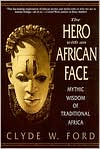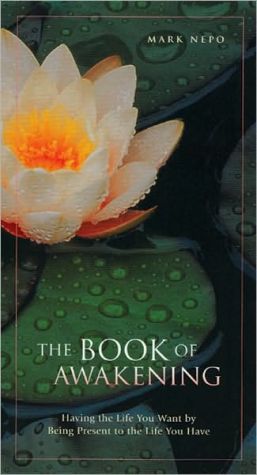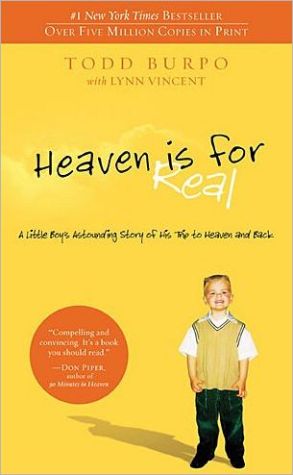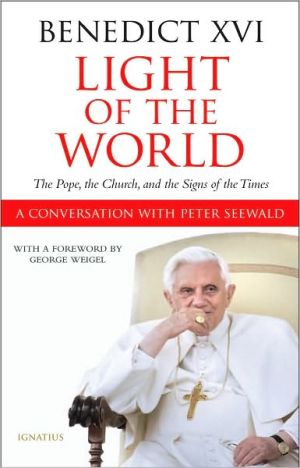The Hero with an African Face: Mythic Wisdom of Traditional Africa
In this remarkable book, Clyde Ford restores to us the lost treasure of African mythology, bringing to life the ancient tales and showing why they matter so much to us today.\ African myths convey the perennial wisdom of humanity: the creation of the world, the hero's journey, our relationship with nature, death, and resurrection. From the Ashanti comes the moving account of the grief-stricken Kwasi Benefo's journey to the underworld to seek his beloved wives. From...
Search in google:
In this remarkable book, Clyde Ford restores to us the lost treasure of African mythology, bringing to life the ancient tales and showing why they matter so much to us today.African myths convey the perennial wisdom of humanity: the creation of the world, the hero's journey, our relationship with nature, death, and resurrection. From the Ashanti comes the moving account of the grief-stricken Kwasi Benefo's journey to the underworld to seek his beloved wives. From Uganda we learn of the legendary Kintu, who won the love of a goddess and created a nation from a handful of isolated clans. The Congo's epic hero Mwindo is the sacred warrior who shows us the path each person must travel to discover his true destiny.These and other important African myths show us the history of African Americans in a new light—as a hero's journey, a courageous passage to a hard-won victory. The Hero with an African Face enriches us all by restoring this vital tradition to the world. KLIATT African American history is explored through African mythology in this accessible and engaging book. Ford applies the image of the hero's journey as the common thread for the various themes and illustrates his points with elements found in the mythologies of many African cultures. (Encourage readers not to skip the Introduction, in which he presents his thesis.) He divides his topic into concrete themes, setting off the actual myths with decorative bullets, and his retellings are lucid and lively, as is his commentary. Ford documents his work meticulously, including a map of the people and myths of Africa, pronunciation of African words, a list of the watermarks used in the text, and a list of illustrations and tables, notes, a bibliography and an index. The book is handsomely put together, with creamy pages and clear dark brown type. This book would enhance curricula featuring African American studies, history or mythology as well as providing enlightening insight into both African and African American culture. KLIATT Codes: SA—Recommended for senior high school students, advanced students, and adults. 1999, Bantam, 227p, 24cm, 98-24162, $15.95. Ages 16 to adult. Reviewer: Donna L. Scanlon; Children's Libn., Lancaster Area Lib., Lancaster, PA, July 2000 (Vol. 34 No. 4)
The Quest for the African Hero\ The hero with an African face has much in common with the heroes of all ages and all lands, for the hero quest is not predicated on the particularities of place and time. Simply stated, the hero quest is orchestrated in three movements: a hero is called to venture forth from familiar lands into territory previously unknown; there the hero encounters marvelous forces and with magical assistance wins a decisive victory over the hindering powers of the unknown; then, with boon in hand, the hero returns to the land of his origin. Departure, fulfillment, return—evidence of these three movements is uncovered in all African hero adventures. African mythology then shades the hero's career in colors of its own.\ On this journey, the hero with an African face might aid us in navigating the vicissitudes of life: helping us to find strength and courage where we had thought only to find weakness and fear; to venture deeply within ourselves where we had thought only to pass lightly through our lives; to wake our gods where we had thought only to wrestle our demons.\ The Call of Destiny\ Uncama dug a millet garden, but when the millet had begun to ripen, a porcupine continually wasted it. No matter how early Uncama rose, when he arrived in his garden the porcupine had already devoured the millet. At length he waited for a day on which there was an abundance of dew. On that day, he arose and said, "Today then I can follow it well, if it has eaten in the garden, for where it has gone the dew will be brushed off. At length I may discover where it has gone into its hole."\ Thus begins a Zulu tale of Uncama's journey to the underworld.\ Whether in life or in myth, the hero quest commences with some call or lure that wakes the hero to his destiny: an unforeseen illness may arise; a monster may appear to terrorize the countryside; a chance encounter may open a life-changing path; an unexpected animal appears whose trail the hero follows to great adventure, as in the opening of this Zulu myth.\ So Uncama, with weapons in hand, embarked along the marauding porcupine's trail of dew, and upon discovering its hole, he pressed ahead, down into the depths, without further hesitation, saying, "I will go till I reach it, and kill it." Once inside the hole, Uncama passed through to the underground realm, crossing over to the land of departed souls.\ Zulus are among the southernmost members of the extensive Bantu language family, which shares many beliefs, including belief in the special potency and sacred power of the subterranean realm Uncama visited. This is the spirit world of departed souls referred to among the Bantu as mosima, which originally meant "the abyss" but has since devolved to mean simply "a hole in the ground," "a den," or "the hole of a wild animal"—hence the obvious relationship in this myth between the porcupine's hole and Uncama's arrival in this spirit land.\ Uncama's curiosity and his determination to punish this animal lead him on until finally he comes to a village. He has entered a kind of purgatory, a world inhabited by departed souls yet fashioned in the image of the world of the living.\ "Ho! What place is this?" he said. "I am following the porcupine, yet I have come upon a dwelling."\ At this point Uncama became fearful and he began to retreat, walking backward along the path he had thus far traversed, anxiously pondering his fate with the thought: "Let me not go to these people, for I do not know them; perhaps they will kill me."\ Alas, this erstwhile traveler returns home, back through the animal portal of his adventure, to a surprised wife and community, for they had already burned his clothes and possessions, taking him for dead. And to these assembled, astonished folk he tells his tale:\ "I have come from a great distance—from those who live underground. I followed a porcupine; I came to a village and heard dogs baying, children crying; I saw people moving around, the smoke from their cooking fires was rising. So I came back. I was afraid, I thought they would kill me. And it is because I feared and returned that you see me this day."\ Mythological journeys of descent into the underworld of the dead are symbolic of movement from the light world of ordinary reality to the dark world of the unconscious; there, just as when we fall asleep, we die to the world of wakeful consciousness and awake to the marvelous world of evanescent forms and symbols within. The challenge met by those who successfully travel these corridors of the psyche is to claim some boon or gift from this inner realm: an insight or revelation that will release the energies pent up in the labyrinths of personal or social crises; the marker of a new direction that offers reinvigoration where old ways have grown stale. But Uncama's journey, interrupted as it was by his own fear, is marked by failure of this quest; he follows the lure of the porcupine to the underworld, only to become frightened and then return.\ I am reminded of a personal dream some years ago: I was fortunate to have grown up knowing my great-grandfather, with whom I was very close. He died when I was twenty, and shortly afterward I was in that half-asleep, half-awake state called hypnagogic, when I felt his presence in my bedroom and believed I could also make out his form. It scared me, and in this semiconscious state I told him to leave, which he did. It was many years before he appeared in any of my dreams again.\ In the mythic realm, the terrain always rises to meet the traveler—this is the built-in safeguard of the mythic way, even for unsuspecting and unprepared wayfarers like Uncama. The adventure the hero gets is precisely the one he or she is ready for. The kingdom is spread in front of Uncama, but he is unable to meet the requirements for entry because he has followed the porcupine's trail out of mere curiosity and anger. The hero's journey is not for the faint-hearted wanderer, curious but not serious about where the journey leads, nor is it a journey to be taken in the throes of anger, but one to be relished in the spirit of high adventure.\ Uncama's journey to the underworld, motivated by anger, is splendidly contrasted with the Ashanti tale of Kwasi Benefo's journey to Asamando, the Ashanti world of departed souls. Here is the story of a hero whose quest is motivated out of love, suffering, and great compassion:\ A young man was living among the Ashanti. His name was Kwasi Benefo. His fields flourished, he had many cattle. He lacked only a wife to bear children for him, to care for his household, and when the time should come, to mourn his death. Kwasi Benefo went looking. In his village he found a young woman who greatly pleased him. They married. They were content with each other. But soon the young woman faded, and death took her. Kwasi Benefo grieved. He bought her an amoasie, a piece of silk-cotton cloth to cover her genitals, and beads to go around her waist, and in these things she was buried.\ Kwasi Benefo could not forget her. He looked for her in his house, but she was not there. His heart was not with the living anymore. His brothers spoke to him, his uncle spoke to him, his friends spoke to him, saying, "Kwasi, put it from your mind. This is the way it is in the world. Find yourself another wife."\ At last Kwasi Benefo comforted himself. He went to another village. He found a young woman there and made arrangements. He brought her home. Again he became contented with living. The woman had a good character. She took good care of the household. She tried in every way to please her husband. Kwasi Benefo said, "Yes, living is worthwhile." But after she had been pregnant for some time, the young woman became ill. She grew gaunt. Death took her. Kwasi Benefo's heart hurt him. This wife, too, was buried in her amoasie and beads.\ Kwasi Benefo could not be consoled. He sat in his house. He would not come out. People said to him, "People have died before. Arise, come out of your house. Mingle with your friends as you used to do." But Kwasi Benefo did not desire life anymore. He remained in his house.\ The family of the young woman who had died heard about Kwasi Benefo's grief. They said, "He is suffering too much. This man loved our daughter. Let us give him another wife." They sent messengers to Kwasi Benefo, and they brought him to their village. They said to him, "One must grieve, yes, but you cannot give your life to it. We have another daughter, she will make a good wife for you. Take her. This way you will not be alone. What is past is past, one cannot go there anymore. What a man has loved is in his heart, it does not go away. Let the dead live with the dead, and the living with the living."\ Embedded in these words of consolation to a distraught Kwasi Benefo are references to Akan (the language family of the Ashanti) sacred wisdom. Just as with the Bantu, the Ashanti believe that the dead inhabit a world that is a mirror image of the world of the living, only underground; in this world, death happens in stages over several generations. As long as the name of a departed ancestor can be called, that ancestor is not dead in some final sense of the word. These unseen ancestors (called nsamanfo in Akan) can, then, be forces in the lives of the living, and in dreams or states of deep reverie, the spirit of a living individual (sunsum) can convene with these nsamanfo.\ Kwasi Benefo felt the presence of his wife who had passed into the world of the ancestors:\ "Now, how can I take another wife when the one who has died calls to me?"\ They answered, "Yes, that is the way a person feels. But in time it will be different."\ In time it was different for Kwasi Benefo, who returned to his home and his fields; eventually the pain of his wife's death lessened, and he went back to the village of her family seeking the daughter whose hand in marriage they had so graciously offered him. The two were wedded, and she bore a fine son whose birth was feted throughout Kwasi Benefo's village.\ "My life is good," Kwasi Benefo told his wife and friends. "When has it ever been so good?"\ One day while Kwasi Benefo was tending his crops, some village women hurried to him with news that a tree had fallen.\ "Who cries over a falling tree?" he thought. Then darkness covered his spirit. He said, "Is there something left unspoken?"\ They said, "Your wife was coming back from the river. She sat beneath the tree to rest. A spirit of the woods weakened the roots, and the tree fell on her." Kwasi Benefo ran to the village. He went to his house. His wife lay upon her mat without life in her body. Kwasi Benefo cried out. He threw himself on the ground and lay there as if life had departed from him also. He heard nothing, felt nothing. People said, "Kwasi Benefo is dead." The medicine men came. They said, "No, he is not dead. He lingers between here and there." They worked on Kwasi Benefo. They revived him. He stood up. He made the arrangements that were necessary. There was a wake, and the next day his wife was buried in her amoasie and beads.\ After this Kwasi Benefo plunged into deep despair. What evil fate had visited his life? What woman would want to be married to him? What family would entrust their daughter to him? Even his friends began to look at him with suspicion. His cattle, his crops, even his son—what meaning did they have for him after all this tragedy and loss?\ He abandoned his house, he abandoned his farm. He carried his son to the place where his wife's family lived and left him there. He went out into the bush. He walked for many days, not caring where he was. He arrived at a distant village, but he departed from it at once and went deeper into the bush. At last, at a wild place, he stopped. He said, "This place, far from people, I will stay here." He built a crude house. He gathered roots and seeds to eat. He made traps for small game. Thus he lived. His clothing turned to rags, and he began to wear the skins of animals. In time he almost forgot that his name was Kwasi Benefo and that he had once been a prosperous farmer. His life was wretched, but he did not care. This is the way it was with Kwasi Benefo.\ These were the "forest years" of Kwasi Benefo's self-enforced exile. This earnest man has misread the signposts of his life, interpreting his great pain and suffering as a direction to quit the world, renounce all material possessions, and retreat to the life of an ascetic recluse. But this hero's journey does not end here:\ After several years passed, Kwasi Benefo reemerged from his forest seclusion and traveled to a distant village where he was unknown; there he began to farm again and married for a fourth time. But when his fourth wife fell ill and died, Kwasi Benefo's will was broken.\ "How can I go on living?" He abandoned his farm, his house, and his cattle, and he journeyed back to the village where he was born. People were surprised because they had thought he was dead. His family and his friends gathered to celebrate his return, but Kwasi Benefo said, "No, there is to be no celebration. I have come back only to die in my own village and be buried here near the graves of my ancestors."\ This is the turning point of the whole adventure, for once Kwasi Benefo lets go of willing how his life should unfold, a way opens for him to receive a great boon, born of the pain and suffering he has so desperately wished to escape.\ One night as he lay sleepless, the thought came to him that he should go to Asamando, the land of the dead, and see the four young women who had shared his life. He arose. He went out of his house and departed from his village. He went to the forest place called Nsamandow, where the dead were buried. He reached it; he went on. There were no paths to follow. There was no light. All was darkness. He passed through the forest and came to a place of dim light. No one was living there. There were no sounds in the air. No voices of people, no birds, no animals broke the stillness. Kwasi Benefo went on, until he came at last to a river. He tried to ford the river, but he could not do it, for the water was too deep and it was running too fast. He thought, "Here my journey comes to an end."\ Kwasi Benefo followed the lure of his own pain and suffering into a new, uncharted, and potentially dangerous realm where there were "no paths to follow," where "no one was living," where "all was darkness." This is the first step for one who has been called to an authentic life of self-realization beyond the pale of social or personal expectations and demands; here, actually, is the true beginning of Kwasi Benefo's hero quest for which his suffering and exile have been but preparation. Here, too, we should hasten to understand this myth in symbolic terms, for like the underworld, forests are symbolic of the human unconscious, and so the myth points to the inward journey beyond the pain and suffering of human life.\ Unsure of how to continue on his path, Kwasi Benefo sits by the river's edge—the first great threshold of this African hero's adventure. On the far shore is the object of his quest, but to get there he must first find a way to cross over.\ At this moment he felt the splash of water on his face, and he looked up. Sitting on the far bank was an old woman with a brass pan at her side. The pan was full of women's loincloths and beads. By this sign, Kwasi Benefo knew her to be Amokye, the person who welcomed the souls of dead women to Asamando, and took from each of them her amoasie and beads. This was why women prepared for burial were dressed as they were, so that each could give her amoasie and beads to Amokye at the river crossing.\ Amokye said to Kwasi Benefo, "Why are you here?"\ And he answered, "I have come to see my wives. I cannot live any longer, because every woman who stays in my house, death takes her. I cannot sleep, I cannot eat, I want nothing that the living world has for the living."\ Amokye said to him, "Oh, you must be Kwasi Benefo. Yes, I have heard of you. Many persons who came through here have spoken of your misfortune. But you are not a soul, you are a living man, therefore you cannot cross over."\ Kwasi Benefo said, "Then I will remain here until I die and become a soul."\ Amokye, the guardian at the river, felt compassion for Kwasi Benefo. She said, "Because of your suffering I will let you come across." She caused the water to run slowly. She caused it to become shallow. She said, "Go that way. There you will find them. But they are like the air; you will not be able to see them, though they will know you have come."\ Crossing such a threshold is often the hero's first challenge, and just as often the threshold guardian is not as benevolent as Amokye. Many African myths symbolize her as an old woman who when not the compassionate crone, is the heinous hag out to frustrate and impede the hero's progress. Other African myths, and much of the world's mythology, depict this threshold guardian as an ogre or monster who if not mastered, threatens the hero's demise.\ In personal terms, the threshold guardian represents those forces of our psyche that bar access to the deeper and more dangerous realms of insight, revelation, and self-discovery—the "yonder shore" of our inner quest. This is the part of our personality we often encounter when we embark, or are thrust, on an adventure of life-changing significance, a time in our life when we must, like Kwasi Benefo, cross over the river into our personal land of the dead. Ask anyone who has ever changed a career, ended a long-standing relationship, or recovered from a serious illness or injury; they will tell you it is like a death, a dying of one's former self so that a new self may be born in its stead. Fear, like that of Uncama's in the preceding myth, may hinder the crossing of the threshold, but so too may low self-esteem, lack of confidence in one's abilities, or the abandonment of hope and faith. Self-revelation itself can cause us to suffer—it is not always easy to learn how we may have contributed to our own pain; it may be difficult admitting what we must do to change. Yet passing such thresholds and facing such challenges and discoveries are the essence of the inner hero's journey.\ This theme of crossing over into the land of the dead was picked up by Nigerian writer Amos Tutuola in his groundbreaking 1952 novel, The Palm-Wine Drinkard, often hailed as marking the beginning of the modern era of African literature. Tutuola's protagonist embarks on a heroic quest in search of his palm-wine tapster who has died; this leads him through a series of adventures to Dead's Town where the threshold guardian tells him "alives" are forbidden to enter, just as Amokye first cautions Kwasi Benefo. The palm-wine drinkard then begins walking backward slowly, retracing his steps as did Uncama, but he finally convinces the guardian to let him stay and goes to meet his former tapster, much as Kwasi Benefo goes to meet his wives. Similar direct references to African mythology are the foundation of the works of many modern-day African writers like Chinua Achebe, Wole Soyinka, and Ben Okri, and it would be difficult to appreciate fully the depths of modern African literature without recourse to the mythology on which it is built.\ Though Kwasi Benefo is an "alive," he, too, was able to enter the land of the "deads":\ Kwasi Benefo crossed the river, and he went on. Now he was in Asamando. He came to a house; he entered. Outside the house he heard the sounds of village activities. He heard people calling to one another. He heard hoeing in the fields, the clearing of brush, and grain being pounded in mortars.\ A bucket of water appeared, and washcloths suddenly came into view before him. He washed off the dust of his journey. Outside the house now, he heard his wives singing a song of welcome. The bucket and washcloths disappeared, and in their place he saw a gourd dish of food and a jug of water. While he ate, the voices of his wives went on singing Kwasi's praises. They told of what a kind husband he had been in the land of the living; they spoke of his gentleness. When he was through eating, the dish and the jug disappeared, and then there was a sleeping mat for Kwasi. His wives invited him to rest. He lay down on the mat. His wives sang again, and in their song they told Kwasi to continue living until his natural death, when his soul would come to Asamando unencumbered by a body. When this time arrived, they said, they would be waiting for him. Meanwhile, they said, Kwasi should marry again, and this time his wife would not die.\ Hearing these sweet words from the women he loved, Kwasi Benefo fell into a deep sleep. When at last he awoke he was no longer in Asamando but back in the forest. He arose. He made his way back to his house in the village. He called on his friends to come and help him build a new house. When that was done, he sent messengers to the people who belonged to his fraternal society, saying that on such and such a day there would be a clearing of his fields. The men gathered on that day. They cleared and burned his fields; they began the hoeing. Kwasi Benefo planted. He began to farm and his crops grew. Again he mingled among people. In time he found a wife. They had children. They lived on. That is the story of Kwasi Benefo. The old people told it that way.\ So Kwasi Benefo passes through the portal to the underworld unafraid, and receives the redeeming, life-affirming words of the wives who have gone there before him. With this sublime gift, he returns to the light world of ordinary mortals renewed, a living witness to the redemptive, transforming power of suffering, compassion, and love.\ We can hear echoes of this hero myth in the words of Martin Luther King Jr., a modern-day hero, who in his "I Have a Dream" speech encouraged his listeners "to work with the faith that unearned suffering is redemptive." With these words, King, a Baptist preacher, expressed the Christian symbolism of Jesus' willing crucifixion in social and political terms. The principal themes of this Ashanti myth, then, converge with similar themes about pain and suffering found in Christianity, Buddhism, and spiritual traditions worldwide that point the way to a path through and beyond the inevitable sorrows of life.
PrefaceAcknowledgmentsA Map of the People and Myths of AfricaGuidelines for the Pronunciation of African WordsList of WatermarksList of Illustrations and Table1Voices of the Ancestors12The Hero with an African Face163Myths of Death and Resurrection354The Soul's High Adventure525The Heart of the Sacred Warrior686The Way of the Master Animals957The Goddess in Africa1148Orishas: Mysteries of a Divine Self1429Myths at the Beginning and End of Creation17010Closing the Sacred Circle192Endnotes and Permissions201Bibliography211Art Credits215Index217About the Author228
\ KLIATTAfrican American history is explored through African mythology in this accessible and engaging book. Ford applies the image of the hero's journey as the common thread for the various themes and illustrates his points with elements found in the mythologies of many African cultures. (Encourage readers not to skip the Introduction, in which he presents his thesis.) He divides his topic into concrete themes, setting off the actual myths with decorative bullets, and his retellings are lucid and lively, as is his commentary. Ford documents his work meticulously, including a map of the people and myths of Africa, pronunciation of African words, a list of the watermarks used in the text, and a list of illustrations and tables, notes, a bibliography and an index. The book is handsomely put together, with creamy pages and clear dark brown type. This book would enhance curricula featuring African American studies, history or mythology as well as providing enlightening insight into both African and African American culture. KLIATT Codes: SA—Recommended for senior high school students, advanced students, and adults. 1999, Bantam, 227p, 24cm, 98-24162, $15.95. Ages 16 to adult. Reviewer: Donna L. Scanlon; Children's Libn., Lancaster Area Lib., Lancaster, PA, July 2000 (Vol. 34 No. 4)\ \ \ \ \ BooknewsAs a chiropractor, a psychotherapist, and a professor of Swahili (Columbia U.) and African-American history (Western Washington U.), Ford found that personal healing began when the expression of suffering changed from stories of victimization to myths of empowerment, and thought the healing of the African-American community as a whole might take the same route. He recounts his pilgrimage through Africa and the tales he returned with. Annotation c. Book News, Inc., Portland, OR (booknews.com)\ \








